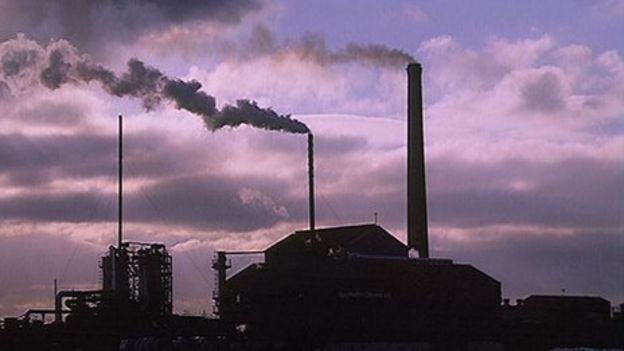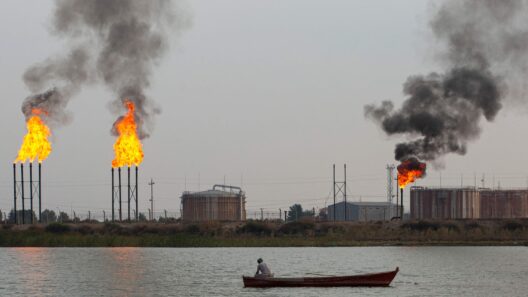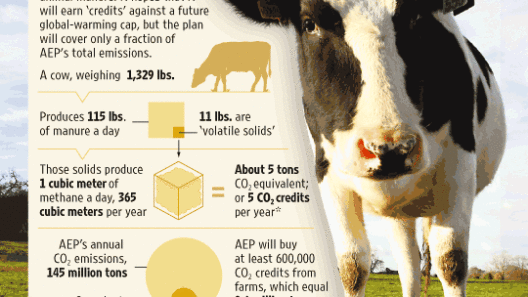Did the Industrial Revolution inadvertently set the stage for the current climate crisis, or was it a mere byproduct of a broader, more intricate dance with our environment? This inquiry brings forth an essential paradigm in understanding the relationship between industrialization and global warming. To grasp the profound effects of the Industrial Revolution on our climate, one must first understand the components that propelled this pivotal era and their subsequent environmental ramifications.
The Industrial Revolution, spanning from the late 18th to the early 19th centuries, marked a monumental shift in human activity. Transitioning from agrarian economies to industrial powerhouses, it introduced machinery and techniques that exponentially increased production capabilities. However, this increased productivity came at a significant cost—one that the planet continues to bear today.
At the crux of this transformation was the adoption of fossil fuels, particularly coal. The combustible material not only revolutionized industries but also became a fundamental source of energy. As factories sprung up, so did emissions. Combustion processes released carbon dioxide (CO2) and other greenhouse gases into the atmosphere. These emissions have a profound impact on global warming due to their heat-retaining properties, creating a blanket effect that prevents the Earth’s heat from escaping back into space. Thus, one could argue that the Industrial Revolution set a course towards an unprecedented increase in atmospheric carbon levels.
As industrial activities proliferated, so did the extraction of natural resources. Forests were decimated to provide timber for factories, coal mines were established, and wetlands were drained to make way for agricultural expansion. This loss of biodiversity and natural habitats led to a decline in the Earth’s ability to sequester carbon, exacerbating the existing problem. When we question the legacy of the Industrial Revolution, we must also consider these ecological tolls and the transformations they wrought on our planet’s intricate ecosystems.
Furthermore, the structural changes brought about by industrialization transformed not only the economy but also societal behaviors and consumption patterns. The emergence of the consumer culture, the penchant for mass production, and the relentless pursuit of efficiency catalyzed a consumerist mindset that persists today. In this sense, the Industrial Revolution can be viewed as the catalyst that ignited a spiral of consumption, energy use, and, consequently, environmental degradation.
Interestingly, while the Industrial Revolution contributed significantly to global warming, it simultaneously introduced the scientific mindset that led to a better understanding of climate change. Pioneering scientists began to document the correlation between industrial activities and atmospheric changes. For instance, John Tyndall’s research in the 19th century laid the groundwork for understanding how gases like carbon dioxide and methane trap heat in the atmosphere. This growing body of knowledge prompted early discussions about the potential risks of unchecked industrialization and resource exploitation.
However, framing industrialization solely as the villain in the climate narrative oversimplifies a complex issue. It posits a challenge: Are we willing to recognize the multifaceted nature of climate change and the role of various socio-economic dynamics throughout history? It’s vital to acknowledge that while the Industrial Revolution initiated a trajectory towards climate instability, subsequent technological advancements and policies have the potential to alter that course.
Post-Industrial Revolution, innovations in energy efficiency and the development of alternative energy sources present a counterbalance to the destructive legacy of fossil fuel dependency. Renewable energy technologies, such as solar and wind power, exemplify humanity’s capacity for adaptation and resilience. Shifting from traditional energy sources to more sustainable practices is not just a modern endeavor; it is a necessary evolution for our planet’s inclination towards a more balanced climate.
Moreover, the global response to climate change indicates a paradigm shift influenced by the very forces unleashed during the Industrial Revolution. International agreements, such as the Paris Accord, signify a collaborative attempt to mitigate global warming through commitments to reduce greenhouse gas emissions. These efforts encapsulate a crucial recognition that collective action is imperative to transcend the challenges that industrialization has introduced.
In retrospect, the Industrial Revolution undoubtedly contributed to the rise of global temperatures through its unfettered emissions of greenhouse gases and environmental degradation. However, it also catalyzed advancements in understanding and address climate issues that we face today. As we navigate the complexities of climate action, deliberation is needed regarding the dual legacy of industrialization.
So, when pondering whether the Industrial Revolution was the cornerstone of global warming, the answer is nuanced. On the one hand, it paved the way for environmental impacts that are now irrefutable; on the other, it provided humanity with the tools and awareness to confront those challenges. As we stand at the crossroads of progress and preservation, it is paramount that we learn from history—acknowledging the past while striving for a sustainable future.
Ultimately, the interplay between industrialization and climate change is not merely a historical narrative but a call to action. It beckons societies to reflect, innovate, and collaborate in addressing one of the most pressing challenges of our time. A collective effort to refine our relationship with the environment can lay the groundwork for a more sustainable trajectory, ensuring that the lessons of the Industrial Revolution are applied not just to perpetuate growth, but to safeguard the planet for generations to come.







